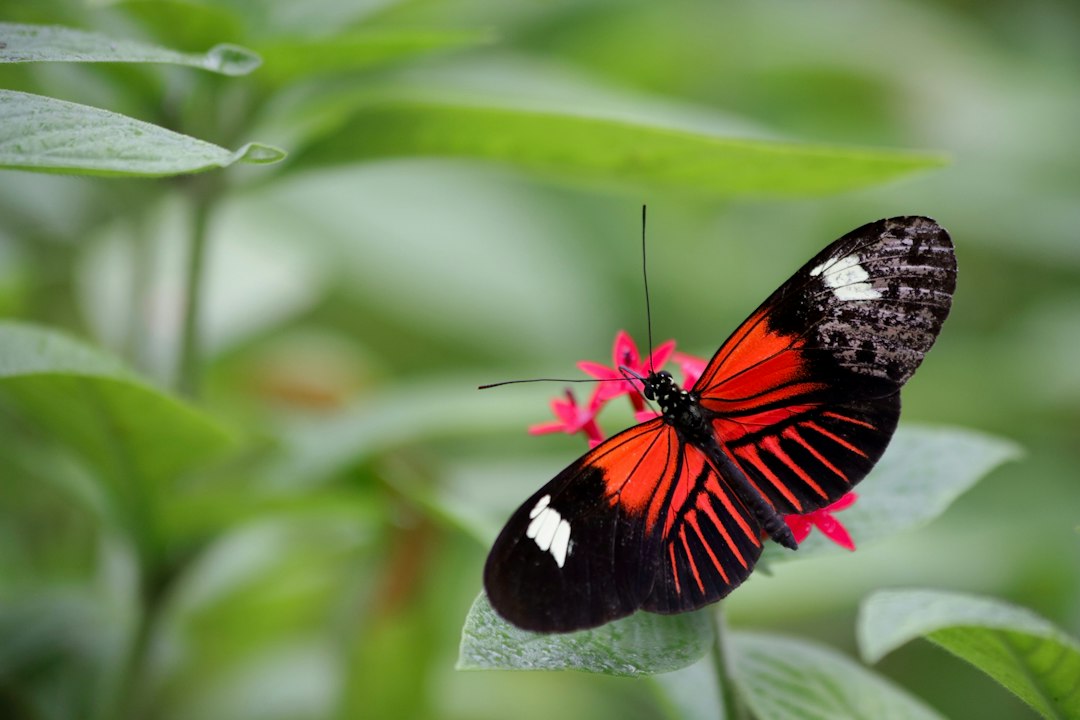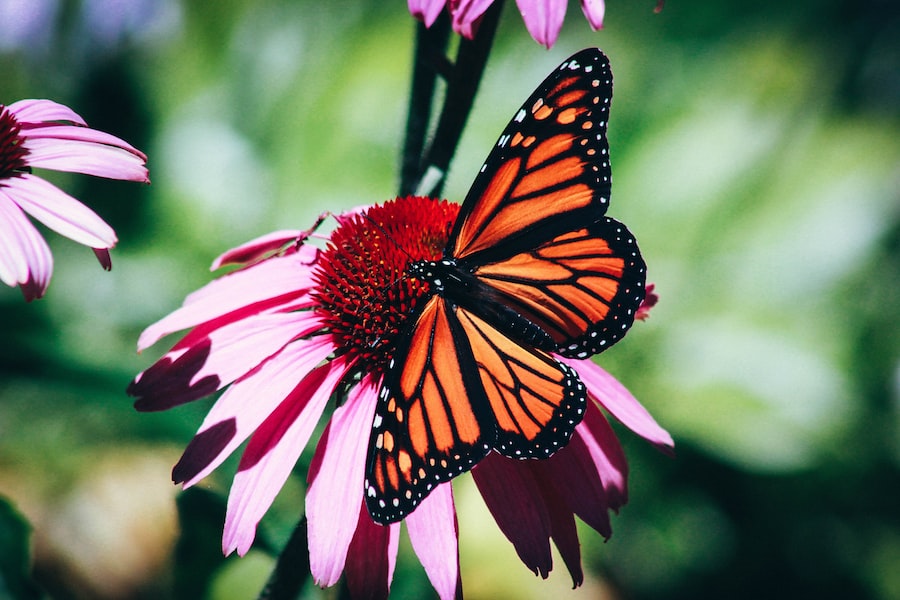When to Prune Butterfly Bushes: A Guide to Proper Cutting Back

Butterfly bushes, also known as Buddleia, are a popular choice for gardens due to their vibrant flowers and ability to attract butterflies and other pollinators. These shrubs are known for their fast growth and abundant blooms, but in order to maintain their health and maximize their blooming potential, pruning is essential. Pruning helps to shape the bush, remove dead or diseased branches, and promote new growth. In this article, we will explore the importance of pruning for butterfly bushes and provide tips and techniques for successful pruning.
Key Takeaways
- Butterfly bushes have a growth cycle that includes dormancy, bud break, growth, and flowering.
- Pruning is essential for healthy butterfly bushes because it promotes new growth and prevents disease.
- The best time to prune butterfly bushes is in late winter or early spring before new growth appears.
- Properly preparing pruning tools includes cleaning and sharpening them to prevent damage to the plant.
- Techniques for pruning butterfly bushes include removing dead or damaged wood, cutting back to healthy buds, and shaping the plant for optimal growth.
Understanding the Growth Cycle of Butterfly Bushes
To understand the importance of pruning for butterfly bushes, it is helpful to understand their growth cycle. Butterfly bushes are deciduous shrubs that go through a period of dormancy during the winter months. In early spring, new growth emerges from the base of the plant and continues throughout the growing season. The shrub produces flowers on new growth, so pruning plays a crucial role in promoting blooming.
Why Pruning is Essential for Healthy Butterfly Bushes
Pruning is essential for maintaining the health and vitality of butterfly bushes. By removing dead or diseased branches, you can prevent the spread of disease and improve air circulation within the plant. This helps to prevent fungal infections and promotes overall plant health. Additionally, pruning stimulates new growth, which leads to more abundant blooming.
Pruning also helps to shape the butterfly bush and control its size. Without regular pruning, butterfly bushes can become overgrown and unruly. By selectively removing branches, you can maintain a desired shape and size for your bush.
Identifying the Right Time to Prune Butterfly Bushes
| Factors to Consider | Optimal Time to Prune |
|---|---|
| Climate | Early Spring or Late Winter |
| Growth Rate | After the First Bloom Cycle |
| Plant Size | When the Plant is Dormant |
| Desired Shape | After the Second Bloom Cycle |
The timing of pruning is crucial for butterfly bushes. Pruning at the wrong time can result in reduced blooming or even damage to the plant. The best time to prune butterfly bushes is in late winter or early spring before new growth begins. This allows you to remove any dead or damaged branches and shape the plant before new growth emerges.
It is important to note that butterfly bushes bloom on new growth, so pruning too late in the season can result in fewer flowers. If you prune too early in the winter, you risk exposing the plant to frost damage. It is best to wait until the threat of frost has passed before pruning.
When deciding when to prune, it is also important to consider the specific variety of butterfly bush you have. Some varieties bloom on new growth, while others bloom on old wood. Understanding the blooming habits of your specific variety will help you determine the best time to prune.
Tips for Preparing Your Pruning Tools
Before you begin pruning your butterfly bushes, it is important to prepare your pruning tools. Using sharp and clean tools will make the pruning process easier and help prevent the spread of disease.
Start by sharpening your pruning shears or loppers. Dull blades can crush branches instead of making clean cuts, which can lead to damage and disease. Use a sharpening stone or file to sharpen the blades, following the manufacturer’s instructions.
Next, clean your pruning tools with a solution of one part bleach to nine parts water. This will help kill any bacteria or fungi that may be present on the tools. Dip a cloth or sponge into the solution and wipe down the blades and handles of your pruning shears or loppers. Rinse them thoroughly with water and allow them to air dry before using.
Techniques for Pruning Butterfly Bushes

There are several different techniques you can use when pruning butterfly bushes, depending on your desired outcome. The most common techniques include rejuvenation pruning, selective pruning, and deadheading.
Rejuvenation pruning is used to renew an overgrown or neglected butterfly bush. This technique involves cutting the entire plant back to within a few inches of the ground in late winter or early spring. This drastic pruning stimulates new growth and helps to rejuvenate the plant. However, it may result in a year without blooms, so it is best to only use this technique when necessary.
Selective pruning is used to shape the butterfly bush and remove dead or diseased branches. This technique involves selectively removing branches to maintain a desired shape and size. Start by removing any dead or damaged branches, cutting them back to healthy wood. Then, selectively remove branches to shape the plant as desired.
Deadheading is a technique used to promote continuous blooming throughout the growing season. As the name suggests, deadheading involves removing spent flowers from the plant. This encourages the plant to produce new blooms instead of putting energy into producing seeds. To deadhead a butterfly bush, simply cut off the spent flowers just above a set of healthy leaves or buds.
Common Mistakes to Avoid When Pruning Butterfly Bushes
While pruning is essential for maintaining healthy butterfly bushes, there are some common mistakes that should be avoided. One common mistake is pruning too late in the season. As mentioned earlier, butterfly bushes bloom on new growth, so pruning too late can result in fewer flowers. It is best to prune in late winter or early spring before new growth begins.
Another common mistake is over-pruning. While it is important to remove dead or diseased branches and shape the plant, excessive pruning can stress the plant and reduce blooming. It is best to follow the 1/3 rule when pruning butterfly bushes – never remove more than 1/3 of the plant’s total growth in one pruning session.
Finally, another mistake to avoid is using dull or dirty pruning tools. Dull blades can crush branches instead of making clean cuts, which can lead to damage and disease. Dirty tools can spread disease from one plant to another. Always make sure your pruning tools are sharp and clean before using them.
How to Shape Butterfly Bushes for Optimal Growth
Shaping butterfly bushes is an important aspect of pruning for optimal growth and blooming. By selectively removing branches, you can control the size and shape of the plant.
To shape a butterfly bush, start by removing any dead or damaged branches. Then, step back and assess the overall shape of the plant. Look for any branches that are crossing or rubbing against each other, as well as any branches that are growing in undesirable directions. Use your pruning shears or loppers to selectively remove these branches, cutting them back to healthy wood.
When shaping a butterfly bush, it is important to maintain a natural and open shape. Avoid cutting the plant into a tight ball or hedge shape, as this can reduce air circulation and promote disease. Instead, aim for a more open and airy shape that allows sunlight and air to reach all parts of the plant.
Pruning Butterfly Bushes for Winter Survival
Pruning butterfly bushes for winter survival is an important step in maintaining their health. While butterfly bushes are generally hardy plants, they can benefit from some winter pruning.
In late fall or early winter, after the first frost has occurred, prune your butterfly bush to remove any dead or diseased branches. This will help prevent the spread of disease and reduce the risk of winter damage.
It is also a good idea to prune back the overall size of the plant to prevent wind damage during winter storms. Cut back the branches by about one-third, making clean cuts just above a set of healthy buds or leaves.
How to Encourage Blooming with Proper Pruning
Proper pruning techniques can help encourage blooming in butterfly bushes. As mentioned earlier, butterfly bushes bloom on new growth, so pruning plays a crucial role in promoting blooming.
To encourage blooming, start by removing any dead or diseased branches in late winter or early spring before new growth begins. Then, selectively prune the plant to shape it and remove any crossing or rubbing branches. This will help improve air circulation and promote overall plant health.
Throughout the growing season, continue to deadhead spent flowers to encourage continuous blooming. By removing spent flowers, you are redirecting the plant’s energy into producing new blooms instead of seeds.
Maintaining Healthy Butterfly Bushes with Regular Pruning
Regular pruning is essential for maintaining healthy butterfly bushes. By removing dead or diseased branches, shaping the plant, and promoting new growth, you can ensure the long-term health and vitality of your butterfly bushes.
Incorporate regular pruning into your gardening routine by pruning in late winter or early spring before new growth begins. This will help prevent overgrowth and maintain a desired shape and size for your butterfly bushes.
Throughout the growing season, continue to monitor your butterfly bushes for any dead or diseased branches and remove them as needed. Also, be sure to deadhead spent flowers to encourage continuous blooming.
In conclusion, pruning is essential for maintaining the health and blooming potential of butterfly bushes. By understanding the growth cycle of these shrubs and the benefits of pruning, you can successfully shape and maintain your butterfly bushes for optimal growth and blooming. Remember to prune at the right time, use sharp and clean tools, and follow proper pruning techniques to ensure the health and vitality of your butterfly bushes. With regular pruning, you can enjoy vibrant blooms and attract butterflies and other pollinators to your garden.



